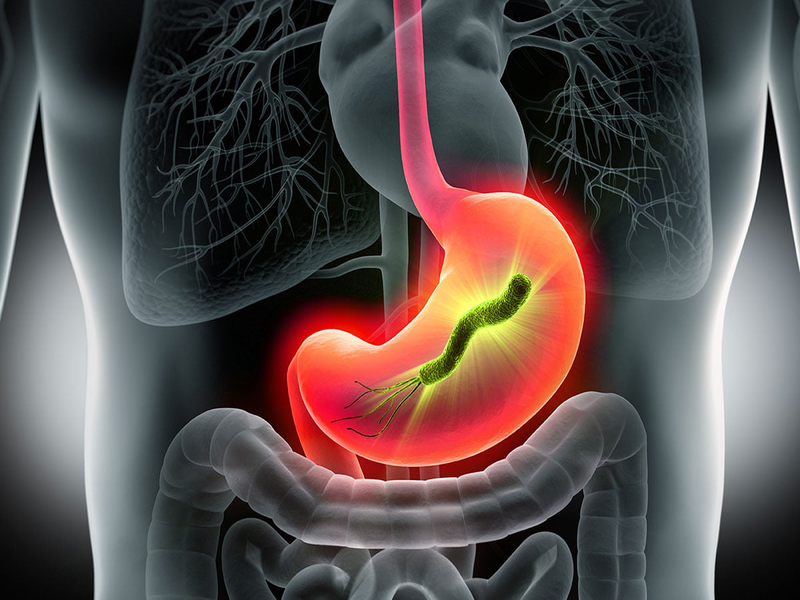There have been important developments in the treatment of gastric cancer in recent years. Changes in gene level, mutations, the development of multidisciplinary approaches in the treatment of stage 4 gastric cancer (advanced gastric cancer), and developments in minimally invasive surgery (laparoscopic surgery) have led to advances in the treatment of gastric cancer. While metastatic disease (liver metastases or peritoneal metastases) was previously treated with only chemotherapy, recent developments have led to successful results in some of these patients by combining surgical treatment with other treatment modalities.
Diagnosis and Staging
The type of tumor, its location in the stomach, diameter (size), depth, spread, and genetic analysis determine the choice of treatment and outcomes. These factors are determined by appropriate diagnosis and staging methods.
Symptoms of gastric cancer often include nausea, vomiting, loss of appetite, early satiety, dyspepsia, and stomachache. These symptoms may be mild and vague. These symptoms could be nonspecific and minor. Additionally, non-cancerous disorders can also exhibit them. When the symptoms worsen, the disease may have reached an advanced stage. Gastric cancer is mainly diagnosed by endoscopy. The stomach wall is examined in detail and a biopsy is conducted on the suspicious lesion. The next stage after the diagnosis is staging. The main purpose of staging is to plan the treatment. Departments such as surgery, gastroenterology, medical oncology, radiation oncology, pathology, and radiology are all involved in the management of gastric cancer, but with the current knowledge, surgery is the only method that gives the patient a chance of complete recovery. International guidelines should be followed when performing diagnostic and staging procedures such as blood testing, ultrasonography, endoscopic ultrasonography, computed tomography, PET, magnetic resonance imaging.
Treatment
Surgery is the only treatment method that gives patients a chance of recovery. In surgical treatment, the entire stomach (total gastrectomy) or a large part of it (subtotal gastrectomy) is removed depending on the location and size of the tumor. For an oncologically adequate surgery, the lymph nodes of the stomach should also be removed extensively. According to international guidelines, the removal of at least 15 lymph nodes is recommended for accurate staging. Today, it is generally accepted that D2 lymphadenectomy (lymph node dissection) is necessary.
Following surgical techniques and technological advances, minimally invasive techniques have also been used in the treatment of gastric cancer. Laparoscopic surgery and robotic surgery are minimally invasive surgical methods. Less pain, less blood loss, a very small scar, earlier recovery of bowel function, and a shorter hospital stay are benefits of minimally invasive surgery. Choosing the appropriate patient is crucial in this situation. Oncologic results are comparable with open surgery with appropriate patient selection.
Endoscopic Treatment for Early Gastric Cancer
In early gastric cancer, it is possible to treat some patients with endoscopic techniques without the need for open or laparoscopic surgery. These techniques are called endoscopic mucosal resection (EMR) and endoscopic submucosal dissection (ESD). These techniques should be used in the presence of certain conditions defined by international guidelines. In patients without these conditions, surgical treatment is necessary. It is critical that the right patient is selected, and the procedure is performed by an experienced endoscopist.
Stage 4 (End stage, advanced stage, metastatic) Treatment in Gastric Cancer
Gastric cancers that spread to other organs through the bloodstream or to the peritoneal cavity by direct spread are more difficult to treat and have worse outcomes. However, with the developments in multimodal treatments in recent years, relatively successful results can be obtained in a substantial number of these patients. It is crucial to assess these patients in a tumor council and come to a decision with input from several departments. (surgery, medical oncology, radiation oncology, pathology, radiology). After complete removal of the tumor nodules in the abdomen, hyperthermic intraperitoneal chemotherapy have increasingly gained popularity for treating gastric cancers that have metastasized to the peritoneal cavity. This procedure is known as cytoreduction + hyperthermic intraperitoneal chemotherapy (CRS-HIPEC). With appropriate patient selection, long survival times can be achieved in many patients who were previously considered inoperable.
The main treatment method for patients who are not suitable for surgery is chemotherapy. Medical oncology specialists make drug selection considering several factors. Targeted therapies are also applied to selected patients with various advanced examinations (gene analysis, etc.).
In conclusion, the treatment for gastric cancer is always evolving. A multidisciplinary approach is crucial for treatment. Advancements in surgical techniques, chemotherapy, targeted therapy, immunotherapy, and cytoreductive surgery (CRS-HIPEC) have increased the chance of curative intended resection in patients with advanced gastric cancer who were previously not considered suitable for surgery.



